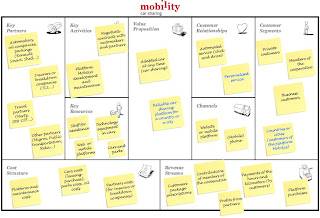

We wanted to analyze Opodo because the company is the leading online travel company in Europe. It operates in 9 countries and the company goal is to give the customer the tools and information to plan and book a travel, which here includes flight, hotel, car hiring etc. Compare to other companies in their field they also focus the business on the business segment and a high level of customer service.
Website?
http://www.opodo.com/

Customer segments
Opodo has two types of customer segments, the private customers and the business customers.
Customer relationships
Compare to other companies in their field, they have a customer service team, especially to the business customers. So the customer service and the co-creation, describes the relationship they have to their customers. Besides that they have also self service, which many of their customers use. Opodo have also created a community for their customers with the blog ohMyGlobe.com.
Channels
There are two types of main channels, the first one is the sales force, handling especially the business customers and then there are web sales, where people can book trips online. Some other channels to mention are blog and newsroom.
Value proposition
Their main value proposition is "get more out of travel", and Opodo describes themselves as the best partner to do that. To support people in making the right travel decision they have a customer service team, there are available to help 7 days a week, which is another of their value proposition. Opodo have the knowledge and experience to give the right recommendation to their customers. They have a wide selection of travels and therefore they can provide their customers with made-to-measure state to some affordable prices because of their competitiveness with their prices.
Key activities
One of the most important key activities is the platform/software, because it's here the biggest part of the company is selling the travels. So without the platform there will be no business. Besides that they also have this service team doing customer support etc. Opodo have a lot of partners so one of their key activities is to take care of them and make sure that they maintain the good relationship with them.
Key ressources
To maintain Opodo’s most important key activities, the platform, they need some resources to do that, so therefore the it-system is one important key resource. And the same count for the service team, so the second important key resources Opodo have is customer supports.
Key partners
Opodo has many partners and the business depends in a high level of them. Some of the key partners are; airline companies, hotels, travel insurance, car hire agency and travel guides. They have chosen to partner with leading travel guides, to provide their customers with details on hundreds of worldwide destinations.
Cost structure
The main costs of Opodo are the people, because of the wages, partner cost and the last thing is to maintain the IT-system.
Revenue streams
Opodo's main source of revenue comes from the online sales and the customer service team sales.






